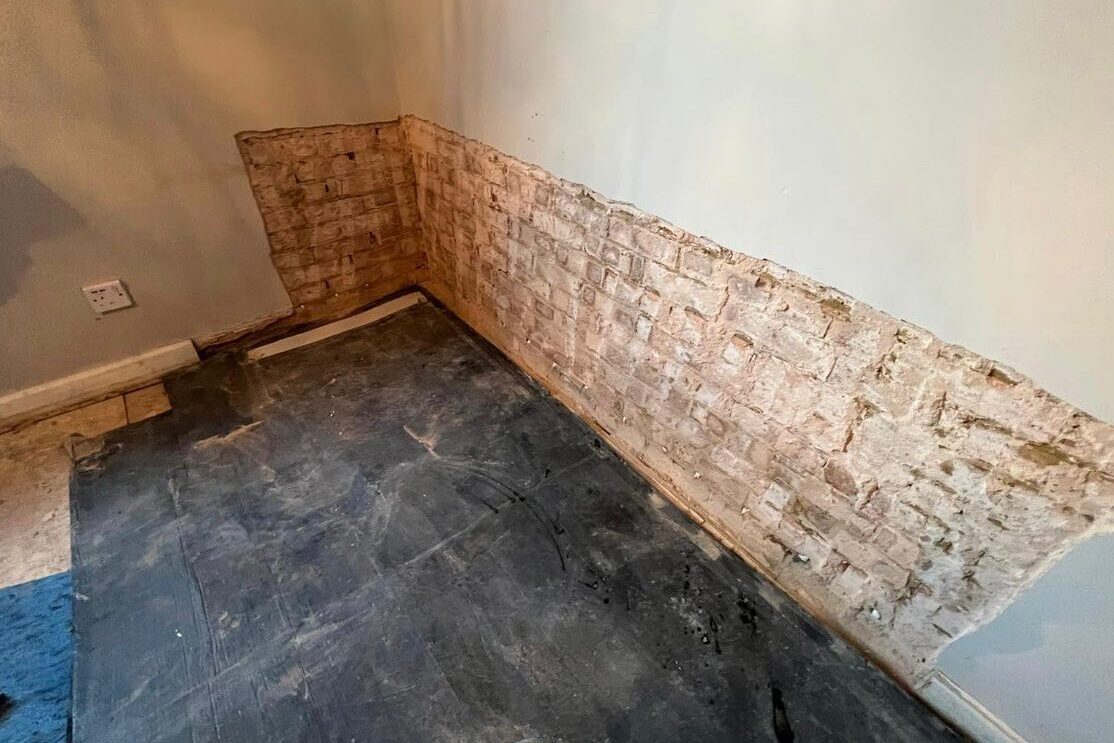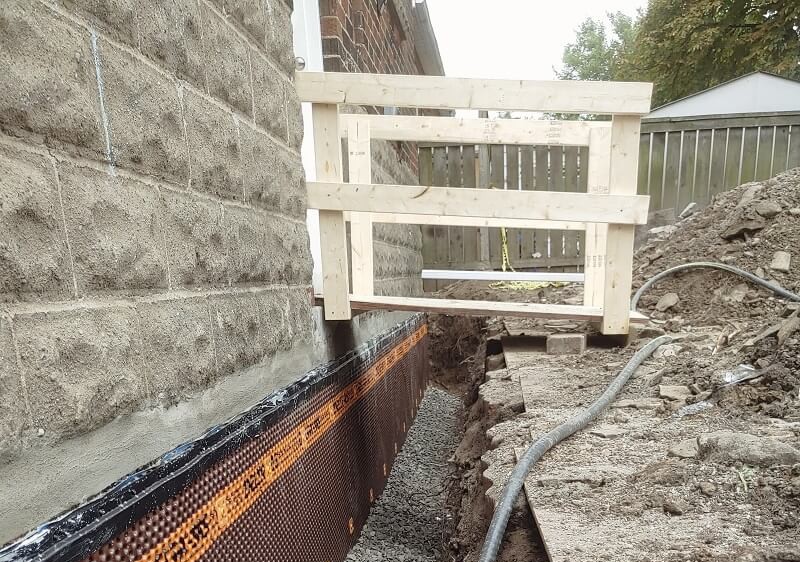The top benefits to hire a licensed damp specialist newcastle today
The top benefits to hire a licensed damp specialist newcastle today
Blog Article
Discovering the Different Strategies and Solutions for Effective Damp Proofing
Dampness in structures positions substantial difficulties to both structural integrity and indoor air high quality. Numerous methods and solutions have actually arised to fight this pervasive issue. From traditional damp-proof membranes to innovative chemical therapies, each method supplies special advantages. Recognizing these options is important for efficient moisture control. Nevertheless, choosing the right remedy depends upon details structure conditions and requirements, prompting further expedition into the most efficient wet proofing strategies offered.
Comprehending the Sources Of Moisture
Moisture can emerge from numerous sources, comprehending these reasons is vital for reliable removal. Frequently, dampness stems from 3 primary resources: rising moist, passing through wet, and condensation. Rising damp takes place when groundwater takes a trip upwards via porous materials, such as brick or stone, frequently because of a lack of an effective barrier (damp removal newcastle). Passing through damp is usually triggered by external aspects, including roof covering leakages, damaged gutters, or damaged wall surfaces, allowing water to penetrate a property. Condensation, on the other hand, arises from excess wetness in the air, usually intensified by bad air flow and temperature differences, bring about water beads creating on surface areas. Identifying these underlying concerns is essential, as each type of wetness requires a customized technique for removal. Correct assessment helps in establishing one of the most reliable options, inevitably safeguarding the architectural honesty of a building and improving indoor air top quality
Traditional Damp-Proof Membrane Layers

Chemical Damp-Proofing Solutions
Chemical damp-proofing options provide an innovative strategy to stop moisture intrusion in structures. These methods normally include the application of liquid chemicals that penetrate stonework and form a barrier versus rising damp. Commonly made use of chemicals consist of silanes, siloxanes, and various other water-repellent representatives that respond with surface area products to develop a hydrophobic layer.The application process usually requires boring holes right into the wall surfaces, infusing the chemical service, and enabling it to treat. This approach is particularly useful for older frameworks where traditional damp-proof membranes may be unwise. Furthermore, chemical damp-proofing can be much less turbulent and extra economical than substantial renovation projects.While efficient, these services rely on correct application and environmental problems for peak performance. Routine upkeep and monitoring are vital to guarantee the long life of the damp-proofing treatment. Generally, chemical damp-proofing represents a flexible alternative for guarding structures versus moisture-related damage
Dental Caries Wall Surface Construction Methods
Tooth cavity wall building and construction strategies supply numerous benefits, especially in wetness control and energy performance. By incorporating an air gap between 2 layers of stonework, these walls efficiently reduce water ingress while improving insulation. This mix not only protects structures from wetness but additionally contributes to minimized power usage.
Advantages of Cavity Wall Surfaces
When considering reliable wet proofing approaches, the benefits of tooth cavity walls stand apart plainly. Dental caries walls include two different layers, producing an air space that effectively lowers wetness infiltration. This layout lessens the threat of wetness, as the external wall surface serves as a barrier against rainfall and water ingress. Furthermore, dental caries walls boost thermal insulation, which adds to energy performance by minimizing warm loss. They also provide sound insulation, helping to develop a quieter indoor atmosphere. Additionally, the air space enables air flow, which aids in wetness control and reduces the probability of mold and mildew growth. These benefits not only enhance the general comfort of a building however also add to its longevity and architectural integrity.
Wetness Control Approaches
Efficient moisture control strategies are important in cavity wall construction to ensure lasting protection against moisture. One main approach involves the unification of weep holes, which assist in water drainage from the dental caries, avoiding accumulation. Additionally, the use of breathable membrane layers can assist take care of dampness degrees while allowing caught vapor to leave. Proper placement of insulation is additionally essential, as it needs to not obstruct drainage courses. Furthermore, making certain that the outer leaves of the dental caries wall are created with waterproof materials improves overall durability. Regular maintenance checks are necessary to determine any type of obstructions or damages early, protecting the framework's integrity. Ultimately, a mix of these strategies creates a durable defense versus wetness intrusion in tooth cavity wall surfaces.
Insulation and Energy Performance
Insulation plays an important duty in enhancing power effectiveness within cavity wall surface building. By including shielding products, these walls produce a thermal barrier that lessens warmth loss and minimizes power consumption. Reliable insulation not only aids maintain a stable indoor temperature but also minimizes the threat of dampness, as it stops condensation within the wall surface cavity. Different methods, such as the usage of stiff foam boards or mineral woollen, can be used to accomplish optimal insulation efficiency. Furthermore, correct installation is necessary to guarantee that voids and gaps are reduced, which can otherwise compromise power effectiveness. Ultimately, a well-insulated tooth cavity wall surface adds substantially to general sustainability and decreases cooling and heating prices for property owners.
External Damp Proofing Approaches
Exterior wet proofing methods are necessary for securing frameworks from moisture seepage. Two reliable strategies consist of the application of waterproof membranes and the setup of French drains. These remedies aid alleviate water build-up and maintain the stability of structures.
Waterproof Membrane Layer Application
While numerous approaches exist for stopping dampness access, the application of water resistant membranes stays a highly effective exterior wet proofing technique. These membrane layers are generally made from products such as polyethylene, rubber, or customized bitumen, giving a durable barrier versus water penetration. The setup procedure includes applying the membrane layer to the exterior surface areas of walls or structures, making certain complete coverage to stop leaks. Appropriate adhesion and sealing at joints are critical to making the most of effectiveness. Water resistant membrane layers can be used in different types, including fluid layers and sheet membrane layers, permitting flexibility based upon the certain requirements of the framework. This technique not just protects buildings from moisture however likewise improves their longevity and structural integrity.
French Drain Installation
One efficient method for taking care of groundwater and preventing wetness accumulation around a structure's foundation is the setup of a French drainpipe. This drain system includes a trench loaded with crushed rock and a perforated pipe that reroutes surface water far from the foundation. Appropriate installation requires mindful planning, making certain that the drain inclines away from the structure to promote suitable water flow. Additionally, the area of the drain is vital; it must be positioned in locations prone to merging or excess wetness. Routine maintenance, including clearing particles from the crushed rock and ensuring the pipeline continues to be unobstructed, is necessary for long-term efficiency. Inevitably, a well-installed French drainpipe can greatly reduce the risk of water-related problems in cellars and foundations.
Interior Waterproofing Approaches
Interior waterproofing techniques are important for securing a building's inside from dampness infiltration and possible water damages. These techniques normally involve the application of customized materials and strategies made to create a wetness barrier within the structure. One common approach is the usage of water-proof finishes or sealers on wall surfaces and floors, which prevent moisture from permeating surfaces.Additionally, setting up indoor drain systems, such as sump pumps, can effectively take care of water accumulation in basements and crawl spaces. An additional approach entails the use of vapor obstacles, which are installed to hinder dampness motion from the ground right into living spaces.Moreover, attending to any kind of splits or voids in wall surfaces or foundations with appropriate sealers assures a detailed defense versus water breach. By applying these interior waterproofing methods, residential or commercial property proprietors can substantially reduce the threat of mold and mildew growth, structural damages, and other moisture-related problems. Correct execution of these techniques is necessary for long-lasting defense and building stability.
Normal Maintenance and Examination Practices
Routine upkeep and inspection techniques are important for guaranteeing the long-lasting efficiency of damp proofing remedies in any type of structure. Routine checks enable homeowner to recognize very early indicators of wetness invasion, such as peeling paint, mold and mildew development, and musty smells. These signs can signify underlying problems that require prompt attention.Inspections need to be conducted a minimum of annually, focusing on vulnerable locations like basements, crawl spaces, and exterior wall surfaces. Throughout these evaluations, residential or commercial property owners ought to take a look at sealants, drain systems, and ventilation to verify they function correctly.Additionally, preserving downspouts and rain gutters is vital, as clogged systems can bring about water buildup near the foundation. Implementing a routine upkeep timetable, in addition to timely repair services, can considerably extend the lifespan of wet proofing procedures and shield the structural integrity of the structure. Aggressive steps ultimately add to the overall health and wellness of the living setting.
Often Asked Concerns
The Length Of Time Does Damp Proofing Normally Last?
The period of damp proofing get more info efficiency varies, commonly lasting between 20 to 50 years. Variables such as application high quality, ecological problems, and maintenance practices significantly affect the durability of the damp proofing treatment.

Can I Damp Evidence My Home Myself?
The private contemplated the expediency of DIY damp proofing. With appropriate research and the appropriate products, it is possible. They also identified the value of professional assistance to guarantee long-lasting efficiency and avoid future concerns.
What Are the Indications of Ineffective Damp Proofing?
Signs of inefficient moist proofing consist of persistent stuffy odors, noticeable mold development, peeling paint, moist patches on walls, and timber degeneration - mould treatment newcastle. Home owners should attend to these issues immediately to stop further damage and health problems
Does Damp Proofing Affect Indoor Air Quality?

Just How Much Does Expert Damp Proofing Cost?
Expert moist proofing costs vary significantly, commonly ranging from $1,000 to $5,000 depending on the residential or commercial property's dimension, the extent of the damp issue, and selected techniques. Each circumstance needs a customized analysis for exact pricing. Frequently, dampness stems from three main sources: climbing wet, penetrating moist, and condensation. When thinking about efficient wet proofing methods, the benefits of tooth cavity wall surfaces stand out plainly. External moist proofing approaches are crucial for securing frameworks from wetness seepage. While different methods exist for stopping wetness access, the application of waterproof membrane layers continues to be a highly effective outside damp proofing method. Indicators of ineffective wet proofing include consistent stuffy odors, noticeable mold and mildew development, peeling paint, wet patches on wall surfaces, and timber decay.
Report this page